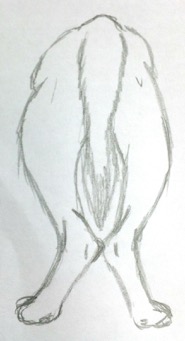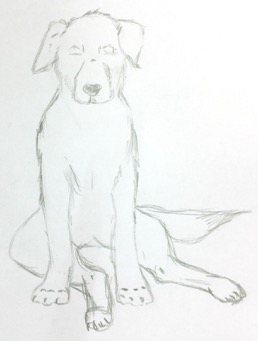| print
link to this post | email a friend Behaviour Matters: When your dog’s behaviour might be a symptom20 Jan 2017 By MONIKA HOYER, BSc, CPDT
Most problem behaviours seen in our dogs are predictable and have relatively straightforward solutions. Every so often, however, we are surprised by behaviours that appear to be unpredictable or unreliable. Sometimes they occur suddenly and are completely out of character for the dog in question.
Popular media trends showing that dogs can benefit from training to solve problems has meant that owners take changes in behaviour seriously, but sometimes it also means they focus only on the behavioural component and not on the physical factor that might be contributing to behaviour.
Early in my career with dogs I was contacted by a family with a not quite two-year-old large breed mix. The family reported that in the last couple of months the dog had started showing aggression towards people and other dogs. I usually start my work on cases like this with a sit down discussion with the owners where we go over the dog’s history and discuss the situations in which they have observed this behaviour. The family told me of two particular incidents that illustrated their concerns.
This dog loved other dogs, loved to play, greeted politely and initiated play without incident. However, in the recent months the dog would start to play with another dog and then mid-game would become aggressive towards her playmate.
The second was an incident where the dog had been riding in the car. She was perfectly calm and relaxed for the entire ride and after the car had been parked. When her owner came around and let her out of the car the dog jumped down onto the sidewalk and without warning lunged at a familiar neighbour walking by.
A few things stood out to me during this discussion.
As a result the family was walking on eggshells around what had previously been their very loving family pet. They could not trust their dog and neither party was happy.
After our talk I asked them to bring their dog inside. When she entered the building the problem began to be clear to me almost immediately. I asked them to walk her and then trot her in a circle around the room. Then I asked them to have her sit. What I saw during these two simple exercises was the key to her aggressive behaviour.
The first hint was the way she stood when not in motion. Here is what it looked like:
This is commonly called being cow-hocked. It’s a term used to describe the relative position of the hocks and toes in the animal’s hind end. In cow hocked animals the hocks (the bony heel on their hind legs) are turned in and their hind feet point outwards. Certain breeds are more prone to being cow hocked than others to varying degrees of severity and most slightly cow-hocked animals are just fine.
This dog, however, was so severely cow hocked that when she stood her hocks would at best, be touching, and at worst, be overlapping. When she walked her hocks clicked against each other with every step.
She could not trot. When she needed to move faster than a walk she could not move her hind legs separately and would start to hop with both hind legs together. This is commonly called bunny hopping. The video below is an example of a bulldog that must bunny hop with both hind legs to get up the stairs in this home. This is likely because the dog either finds moving his hind legs up the stairs one at a time to be painful, restrictive, or unstable feeling.
When asked to sit she flopped immediately into a down. When coaxed back up into a sit she sat back on her tail with her legs sticking out to the front and side. She was unable to maintain a sit position for any length of time and would frequently lie down after only a few seconds.
I recommended that before we start any physical aspects of her training that she see a vet for a full work up including a thorough exam of her rear. The result was, that at only 18 months old the poor girl was suffering from painfully severe hip dysplasia. The sudden unpredictable outbursts were not a behaviour deficit but rather a response to pain. When in a situation where she was suddenly in pain, the dog’s response was to direct aggression at the nearest possible cause. So the nearest person or dog was at risk.
Pain is not an excuse to ignore aggressive behaviour, but the physical contribution to the behaviour needs to be addressed if any training or behavioural modification will work. With her medical care team managing her pain her owners and I were able to move forward with training programs to help change her reaction to pain.
We also teamed up to find better ways to manage her physically so as to prevent the painful stimulus and manage any outbursts.
There are many physical conditions that can adversely affect your dog’s behaviour. So if you have noticed any sudden changes in your dog’s mood, reluctance to perform previously reliable behaviours, or an increase in irritability consider that there might be a physical factor contributing to or even causing the problem. If you think your dog’s problem might be pain, bring them to the Canine Fitness Centre for a full assessment. We’re happy to help.
|

|


